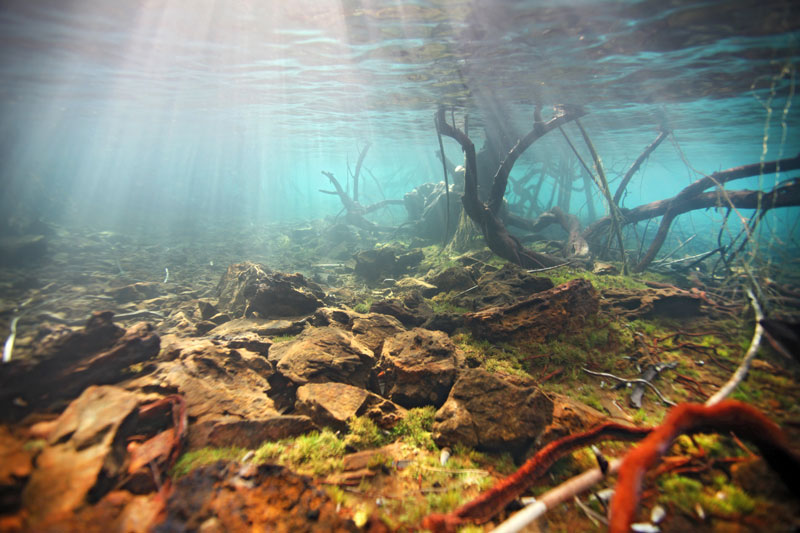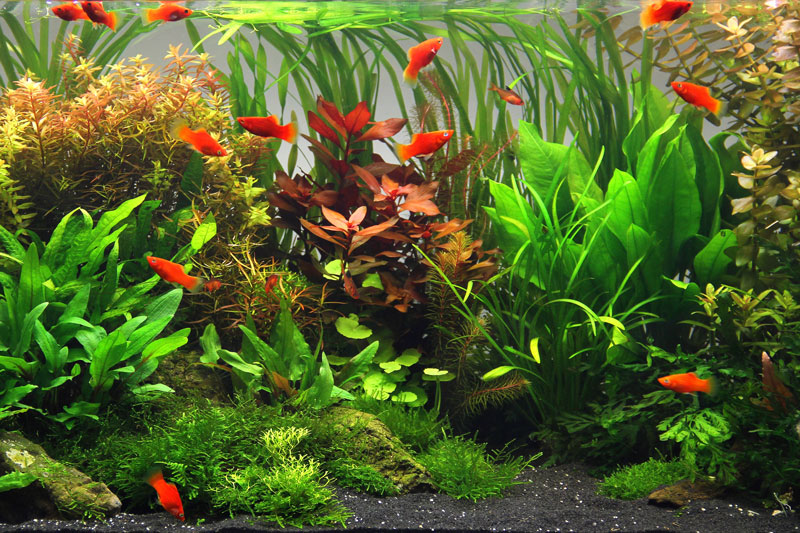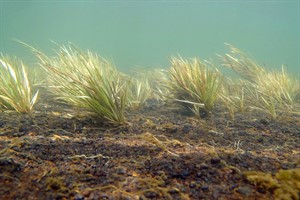Light

Let there be light! - Make your underwater world more beautiful with the right light! Plants need light for photosynthesis, health and good growth.
Without light, there is no life! But what exactly is light?
Light is composed of electromagnetic waves. We see each wavelength as a separate color. With the help of a prism, you can subdivide daylight into its spectral colors just like a rainbow.
Visible light starts with the blue spectrum and ends with red. Blue light consists of short waves and is the highest in energy. It penetrates water depth the most. There is almost no red light, even at shallow depths.
Light can consist of very different wavelengths. White light is always a mixture, and its composition may vary considerably. A plant "perceives" light very differently.
The crucial factors for plant growth are the light spectrum, the amount of light, and of course the duration of illumination time.
Plants can only use parts of the spectrum that they can absorb and turn into chemical energy. In order to do this, they need chlorophyll and other color pigments like carotenoids and xanthophylls.
Plants cannot make use of green light so they reflect it. This is why most plants appear green to our eyes. Plants make the best use blue and red light.
Light not only influences plant growth, but also seeds germination, the plant's growth habit, the length of its internodes, the color and shape of its leaves, budding and flowering, and seed maturation.
This is also true for aquarium plants.
Their appearance and growth habits are influenced by the light spectrum.
Under low light, many plants tend to grow out long internodes so they reach the water surface faster. Here, they have access to more light. These plants often look straggly and weak.
Under strong lighting however, the internodes are short, and the plant looks strong, healthy, and compact.
Midday break
For plants, photosynthesis is hard work! For this reason, plants respond very well to a lighting pause around midday. During this pause, their metabolism can regenerate, and potentially harmful waste products like reactive oxygen species (ROS) can be rendered harmless. In the tropics, you often have dark skies around noon, as thunder showers are typical during this time of day.
Apply a 2 -3 hours long midday break to mimic this in your aquarium.

Which light do fish and invertebrates prefer?
Most fish and invertebrates prefer dim light. In a darker environment, they feel safer as potential predators cannot see them as well.
Under very bright light, they tend to display stress colors, which are usually fainter. If the light is somewhat dimmed, their color intensity improves. This is where plants come into play:
Floating plants for example, cover a part of the water surface and shade the aquarium a bit. High-growing stem plants in the background of the tank, provide the animals with natural hiding-spots. A regular rhythm of light and dark phases is crucial forthe attunement of the internal clocks of the fish and inverts.
The color of the light is unimportant. However, because the animals in the tank depend on healthy, strong plants to produce oxygen and reduce organic waste, choosing a quality light is vital.

Algae prevention with light?
In most freshwater systems, algae play an important part in maintaining the ecological balance. They are a healthy addition to the diet of aquatic animals. Many fish and invertebrates are known to snack on the algae carpet or eat the tiny organisms that live in the algae films. Therefore, we do not aim to keep our tanks free from algae. Instead, we aim to prevent algae from taking over. An important factor in this constant struggle is the right light.
It is a basic fact that plants and algae compete against each other for light, space, and nutrients. Well-lit aquatic plants that can draw upon an ample nutrient supply, will grow vigorously and will outcompete algae.
Many algae species take advantage of the energy-rich blue light spectrum, as well as ultraviolet light.
If you remove some of the blue light waves and do away with the UV portion in your aquarium light, the plants will hardly know the difference, but you will withhold the algae‘s favorite light and thus inhibit its development. In essence, fewer blue and UV wavelengths equals less algae growth.
_____________
Continue reading about: Aquarium Substrate
